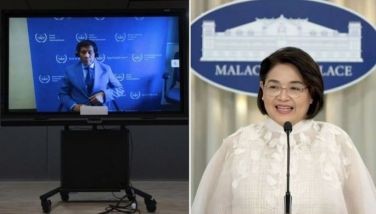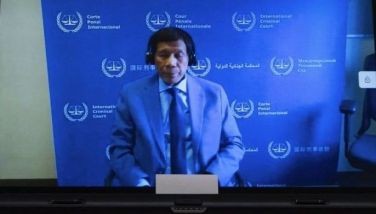The Truthitfier
It had been a nightmare to create, but was – save for the occasional brownout – a dream to operate. The “Truthifier,” as the machine was called, occupied almost the entire fourth floor of the old Doña Salvacion Building on the northwest corner of Plaza Regina in the city’s warehouse district. Most other people would have insisted on a sleek, postmodern structure – or perhaps even an underground vault – somewhere in BGC, among the banks and condos that tried to outdo each other in smartness and attitude, but Arsenio would have none of that. He was a brilliant engineer who understood algorithms, quantum computing, event horizons, The Singularity, and all the other buzzwords that sci-fi junkies more than the scientists themselves loved to spout. But Arsenio was firmly old-school, with a prewar Pelikan 100 in his breast pocket and oxford brogues that he made sure were polished every day, even if he was headed nowhere else but the Factory.
The Factory was where he had built the Truthifier over seven years from the ground up, scrutinizing the assembly of every panel, bolt, nut, wheel, gear, vacuum tube, insulator, switch, dial and the thousands of other parts that went into the machine, some of them turned out on a lathe by Arsenio himself, following his own blueprints. Arsenio was well aware that he could have programmed a computer the size of a pizza box to do his bidding, but Arsenio disdained software, which could be hacked. He believed in finely designed and intricately crafted machines that made noises like “ding!” and “zzzt!,” whose diodes glowed orange in intense concentration, then spat out text from a teletype printer at the far end.
The Truthifier had one basic purpose: to turn ugly statements, even lies, into something that sounded like the velvety truth, better than most people could. There were probably a few professors out there who could do the same thing, but like all people, professors could be distracted, they could forget, they could be bought and they could refuse. They also lied. And they died. The Truthifier, being made of brass, wood, glass, ceramic and copper wire, could do none of that. Arsenio had to acknowledge that he did recruit his old friend Dr. Lucas Tagbanua, retired professor of Linguistics and Philology at the University of Wurzburg and most recently chief librarian at Dagupan City College, to assist him in setting up the tree of linguistic arguments which he would convert to mechanical and electronic pathways. They made history when, in their fifth year, Arsenio typed this carefully on the front-end keyboard: “I murdered my father.” After a few minutes of gears turning and bulbs flickering, Lucas received a message on the other end: “I sent my father to a better place.” It was all still very simple and unsophisticated, but the two men cheered and celebrated. And then, four months later, Dr. Tagbanua died after being hit by a truck delivering action-figure toys.
That, Arsenio sighed, was the problem with humans; they were organic. But he had gotten the fundamental logic down, and he pursued the project to the point that he now had a dial that offered Simple, Moderate and Extreme options, where “I sent my father to a better place” (Simple) became “I relieved my father of the unbearable burden of life” (Moderate) and then “Against all my filial instincts, I decided to return my father – he of my own flesh and blood – to the source and the end of all human aspirations, to the trackless void of eternal peace and silence” (Extreme).
“Does it bother you,” Dr. Tagbanua had asked just a week before he died, and after they had achieved success to the Moderate level, “that the Truthifier isn’t really saying the truth, but something that just sounds like it – maybe even a lie?”
“No,” Arsenio said impatiently, making minuscule adjustments on a master valve that regulated adjectives, comparatives and superlatives. “What we’re doing is giving people a version of the truth that they will want to believe. What’s the use of the truth if you can’t believe it?”
There were many, he was certain, who would pay for Extreme, which would go a long way toward recovering his R&D costs and even make him a tidy profit. He had happily spent all the money he had won from the lottery on his project, so he was beholden to no one, but now that he had accomplished proof-of-concept, he looked forward to some payback, so he could indulge other fantasies like riding a Vespa around Rome with a footloose princess.
Sometimes, just for fun, he fed the machine outrageous fibs like “Jose Rizal was bisexual,” for which he received this Extreme result: “While Jose Rizal had many recorded relationships with women, his sexual preferences were likely as broad as his mind, and his natural curiosity would have encouraged him to explore novel possibilities with his cohort of male friends.”
As soon as word of the Truthifier got around, the clients came to the Factory, in a discreet but steady stream of cars and SUVs with dark-tinted windows whose occupants slipped into a service elevator large enough for a marching band, although they always came alone. A general wanted to explain why he had so many people executed without trial; a priest wanted to introduce his three children to one another; a woman wanted to tell her sister something about her husband. But mostly they were politicians looking for better ways to say the most mundane things, like “I will serve you” or “My opponent is a pedophile.” They paid just enough to keep the Truthifier running and re-oiled every three months.
One day a Rolls-Royce drove up to the Factory and out stepped a man in a gray three-piece suit and top hat, wielding a cane. He looked like a boy who had aged all of a sudden, his long hair hanging in graying strings.
“How can I help you?” Arsenio asked, barely looking up from a console that monitored temperature levels within the machine.
The man took off his hat and put it beside him on the couch. “My father was a crook. For a very long time. But I’d rather forget that. And while I’m at it, I’d rather that everyone forgot, as well. I hear your machine can help.”
“That’s – complicated,” Arsenio said, after figuring out how many propositions the statement involved. “It will cost you some.”
“You must be a very busy man, so I won’t waste your time,” said the customer, glancing at his rose-gold Nemo. “How much for the Truthifier?” With a finger, he drew a horizontal circle in the air. “The whole thing.”
Stunned speechless, Arsenio sized up his visitor, who had crossed his legs and draped his arm on the backrest, like he had all the time in the world. Despite his agitation, Arsenio began thinking of Audrey Hepburn hugging his waist, her perfume curling up his nose as their scooter drove past the Colosseum.
* * *
Email: jose@dalisay.ph and visit my blog at www.penmanila.ph
- Latest
- Trending





























